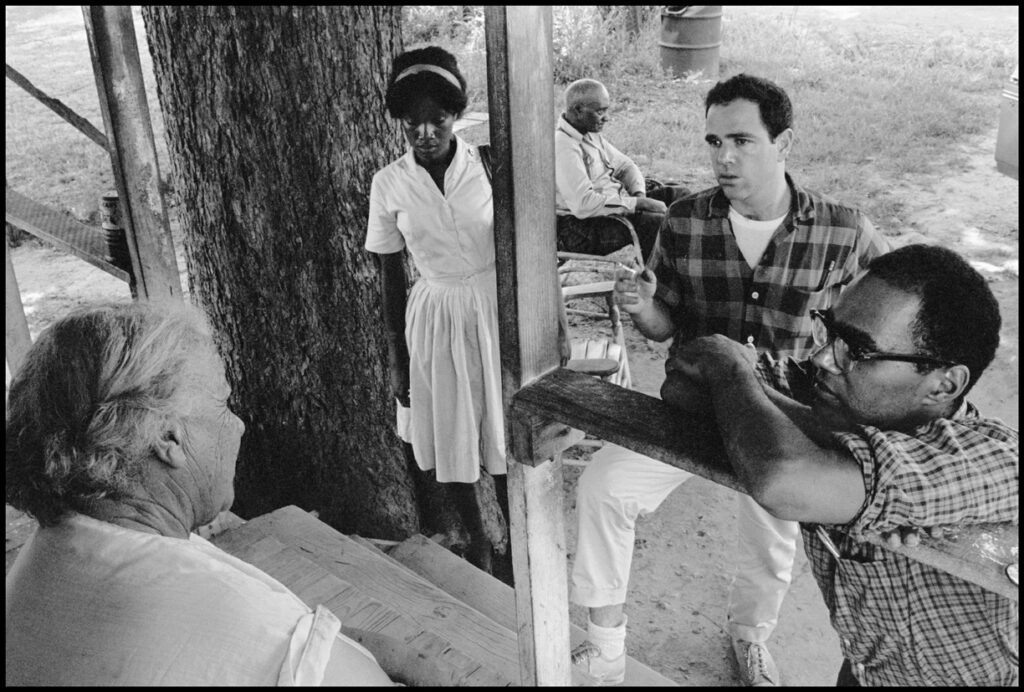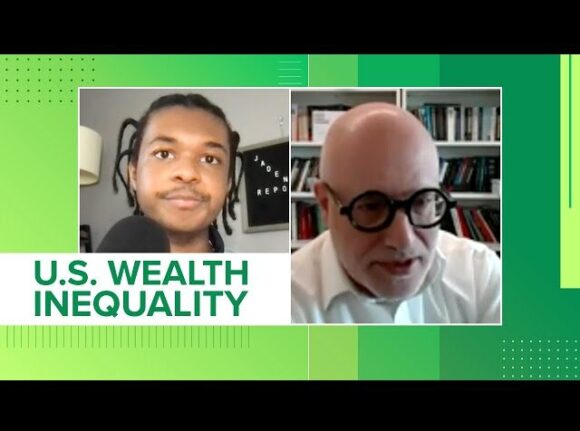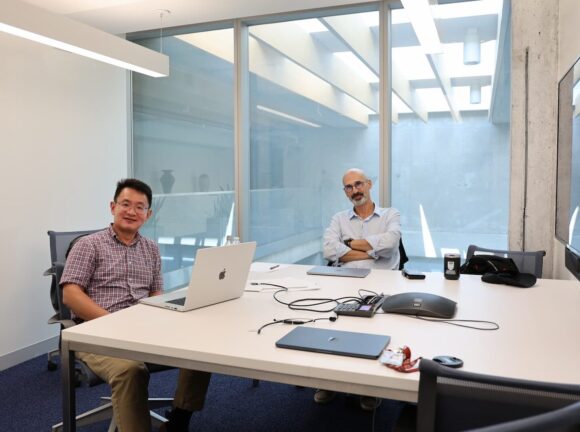Stone Scholar Spotlight on Neil Cholli

Does ‘Welfare-To-Work, Work?’:
A Story from India to Denmark
A Perennial Problem: Work Requirements for Welfare Programs
Welfare programs are a deeply entrenched and contentious political issue in the United States1. During the June 2023 national debt ceiling negotiations, work requirements for welfare programs emerged as a central issue, with staunch political stances on either side unwilling to compromise. The inability of American politicians to agree on welfare legislation threatened to trigger a global recession.
The current state of affairs regarding work requirements in the U.S. originates from a landmark welfare reform enacted in the 1990s. The Personal Responsibility and Work Opportunity Reconciliation Act of 1996, passed during the Clinton Administration, aimed to transform the welfare system by emphasizing self-sufficiency over long-term dependency on government assistance. Most significantly, it replaced the existing Aid to Families with Dependent Children (AFDC) with Temporary Assistance for Needy Families (TANF). AFDC was a categorial entitlement that aided eligible families as long as they met specified criteria. In contrast, TANF was designed as time-limited assistance tied to work requirements. Eligible families were now limited to 5 years of participation in this program (60 months consecutive or nonconsecutive in a lifetime), with exceptions for certain hardships. Additionally, work requirements such as labor-market participation (employment, job training, vocational education, community service, or other approved work-related activities), minimum weekly work hours, and job-seeking efforts were conditions for receiving assistance. The 1996 reform cemented work requirements as standard feature of the American welfare system.

Stone Center Postdoctoral Scholar Neil Cholli, an economist whose research delves into the root causes of poverty and inequality, educational trajectories, and intergenerational mobility, frames the opposing views on welfare work requirements in this way:
“On the one hand, advocates for work requirements say that they help provide a skill investment for participants and screen people out from the programs who have the capacity for labor but would prefer to solely rely on government benefits, no strings attached. Reforms that imposed work requirements aimed to improve self-sufficiency by incentivizing people to work and equip them with job training, educational, or accreditation programs to get them more attached to the labor market.”
Neil goes into further detail: “Critics would argue that these work requirements could actually be harmful because they could impose really high costs on already disadvantaged individuals and families. These high costs could cause them to leave the program altogether worse off, and even go into more socially costly activities like crime to make a living for themselves.”
So which side is right? Was the reform effective? For Neil, it’s not about taking sides, but rather employing evidence and rigorous data analysis to cut through ideological assumptions and arrive at a more comprehensive cost-benefit analysis of the fiscal effectiveness of the welfare-to-work reform. Neil sees deeply entrenched policy debates as opportunities for meaningful research, effective policy intervention, and better community outcomes. Neil’s passion for studying inequality stems from profound life experiences. Growing up in an immigrant household understanding that he benefited from his family’s arduous journey to success, taught him the value of upward social mobility in our society. Through his experience in education and community service, Neil gained a vision for leveraging the tools of economics to realize the values of equality and upward mobility.

A Legacy of Resilience and Opportunity
Born in New Jersey but raised in Massachusetts, Neil was privileged to enjoy a comfortable middle-class upbringing – a legacy built on the hardships and sacrifices of a disadvantaged family. Neil’s maternal grandfather was raised in a poor village in India where he could not attain a formal education beyond grade seven. Encouraged by his teachers, he decided to leave the village to pursue an education, ultimately becoming a successful lawyer in India and securing modest financial stability for his family. Similarly, Neil’s father, despite a difficult childhood, led the way for his family’s migration to the U.S., where he earned a Ph.D., secured a good job, and started a family.
As a witness to his family’s struggles and India’s abject poverty, Neil was raised with a deep appreciation for the value of hard work and the transformative power of education. He found inspiration in the stories of humble heroes, like many Americans, who defied adversity to secure a better future. Neil saw the promise of upward social mobility as an integral part of the American ethos. For the disadvantaged to overcome societal barriers and attain a better future for themselves and their children seemed quintessentially American. As a young adult, Neil often found himself reflecting on these experiences and contemplating his role in addressing societal challenges.
Philosophical questions, such as “Who should bear responsibility in society for poverty and the inequalities I often see?” occupied Neil’s thoughts. He realized that factors beyond an individual’s control, such as birth conditions, race, and societal biases, significantly influence a person’s life trajectory. Though uncertain about the exact path to follow, Neil knew that his life’s mission was to champion a more equitable society where anyone, regardless of their background, has the opportunity to achieve their full potential.
A Nudge from a Civil-Rights Veteran
Neil has always been a math whiz. As a college student, his aptitude for numbers led him to Philadelphia where he began studying mathematics at the University of Pennsylvania. During a summer internship in Miami, his love for math became a force to combat inequality. Neil worked as a teaching assistant for The Algebra Project, a non-profit organization focused on improving math literacy for children in underserved communities. Neil worked closely with struggling students in low-performing, high-poverty high schools. Under the mentorship of Robert Moses, founder of the Algebra Project and leader of the Student Nonviolent Coordinating Committee (SNCC) during the civil rights era, Neil was introduced to a profound realization:
“It was a transformative experience. Even commuting to the school, just seeing how much the demographics and conditions changed from the high-income neighborhoods to the low income Hispanic and African American neighborhoods was eye-opening for me. I realized that this wasn’t a distant problem somewhere in India. There is a huge inequality problem here at home.”

As a young professional, Neil recognized his path forward coming into focus. Combining his skills in mathematics with his passion for addressing real-world challenges, Neil decided to devote his career to the study of economics, earning his Ph.D. from the University of Chicago in December 2022.
Work Requirements in the American Context
The 1996 welfare reform was claimed as a great success by its proponents. Notably, its implementation led to a substantial reduction in TANF caseloads, a decline of over 50 percent between 1996 and 2000. Supporters boasted about positive outcomes like increased employment, reduced welfare participation, enhanced state flexibility, and savings for the national budget.
Now equipped with an economist’s tool kit, Neil turned to the data to evaluate the effects of work requirements. Under the mentorship of Steven Durlauf, Director of the Stone Center for Research on Wealth Inequality and Mobility, Neil completed his first solo-authored research paper, “Does ‘Welfare-to-Work’ Work? Evaluating Long Run Effect Across a Generation of Cohorts.” In this work, Neil analyzed the long-term implications of the introduction of work requirements within welfare programs on its targeted populations and on the government’s budget as whole. However, studying the effects of work requirements in the American context posed significant challenges due to several confounding factors. Neil comments:
“The US is actually a very difficult setting to study the role of work requirements in isolation because so many other changes happened at the same time during the 1996 welfare reform. Factors like the introduction of time limits, block grants to states, and economic growth in the US in the late 90s. To isolate the effects of the introduction of work requirements, my research actually focused on a different country altogether; I looked at Denmark.”
Welfare Reform in Denmark
Denmark presented an ideal context to study the effects of work requirements because there were fewer confounding factors to consider. Neil explains how he proceeded with his study:
“Work requirements were the main thrust of Denmark’s welfare reforms of the 1990s, allowing for a much cleaner analysis. Fortunately, I was able to have access to rich administrative data of the entire population of Denmark between 1980 to the present, and I could link these individuals to observe their life cycle trajectories in income, education, health, crime, and welfare participation.”
Within the Danish context, individuals become eligible for welfare at the age of 18, provided they lack the means to sustain themselves financially. Neil’s analysis focused on individuals considered to be at high risk of welfare participation, including adults (age 18 and over) and children (age 17 and under). Although not yet eligible, children were included in the study to provide a comprehensive understanding of the long-term impacts of the reform across groupings of birth cohorts.
The outcomes of Neil’s investigation revealed striking divergent effects across cohorts depending on the age they were exposed to the reforms. Although the actual study contained several birth cohorts, to understand the broad patterns in the data, we need to keep only three groups in mind defined by their timing of exposure to the reforms: Older Adults, Younger Adults, and Children/Adolescents. For the adult cohorts the reform imposed null or net negative returns. Neil notes, “For older adults I don’t really see much effect whatsoever. It’s very much of a null effect.” He continues, “Among those who faced the reform during young adulthood, I surprisingly see a modest decline in their income
trajectory and thus, lower tax revenue for the government. For this population, the reforms actually generated perverse incentives leading to higher crime rates, or participation in alternate programs such as disability insurance. This effect was predominantly driven by men who had committed crimes in the past. So, these behavioral responses impose large negative fiscal costs for the government because crime is very socially costly.”
By contrast, the results for the children/adolescents demonstrated net positive returns. Neil points out, “If you look at those that were exposed to the policy before they even became eligible when they’re below age 18, I see the exact opposite effect. Those individuals have much higher incomes and as a result higher tax revenue. They have higher educational attainment and better health as measured by inpatient hospitalizations.”

The Anticipation Effect
The positive effect of welfare-to-work reforms on children/adolescents can be explained by what Neil calls the anticipation effect. Neil describes the effect as follows, “These younger cohorts have critical choice margins that older people don’t. They are still in school and can actively plan for their future in terms of how to navigate the job market at the time of the reforms. On the other hand, older individuals have missed that pivotal window for human capital investments. Moreover, the reforms introducing work requirements were a surprise for older cohorts, while younger individuals faced the reforms before even becoming eligible for welfare. This allows the possibility of planning ahead to avoid future work requirements.”
The anticipation effect captures how individuals strategically respond to upcoming policy changes. In this case, the work requirements introduced in the welfare program prompted younger cohorts to invest more in their education, leading to more human capital accumulation and a stronger attachment to the labor market. This anticipation-driven behavior ultimately fosters better outcomes, highlighting the powerful influence of policy expectations on individual choices and life trajectories.
Takeaways for Economists and Policymakers
Considering the perennial welfare policy debate in the U.S. and the insights from Neil’s study in Denmark, it becomes pertinent to revisit the questions posed in an earlier section: Which side of the American policy debate is right? And was the reform effective?
Neil’s findings, which highlight divergent effects across birth cohorts, offer an explanation for the ongoing polarization and resistance to consensus in the American debate. Both sides of the argument can point to supporting evidence. Work requirements yield better outcomes for certain segments of the population. At the same time, they can also lead to unfavorable consequences, such as an increase in crime, for other groups. At least in part, the resolution of both the political stalemate and real-world challenges lies in better policy analysis and implementation.
According to Neil’s results, the welfare-to-work reform does seem to be an effective long-term investment for the government. However, there are important caveats to consider. First, the overall success of the welfare reform in Denmark was solely driven by the positive effects on younger cohorts who were not yet eligible to participate in the programs at the time of implementation. Second, these positive effects are largely explained by the anticipation effect altering behaviors for the younger cohorts, not necessarily by the mechanism of skill investment, which posited that individuals already participating in welfare would develop valuable skills through work requirements. These points are made salient by the fact that policymakers primarily focus on populations already participating in the programs which they intend to change. In other words, policymakers always want to effect change on current welfare recipients but give little consideration to future participants. Finally, the negative impacts of the reform on older cohorts should not be downplayed, even if they are eventually outweighed by the positives. On this last point, Neil says,
“To make everyone better off, policymakers should adopt a forward-looking approach and consider the most effective way to implement policy. My results suggest that the most cost-effective method is to grandfather current beneficiaries under the old rules and apply work requirements only to new entrants. This avoids negative impacts on older cohorts, whose income and labor market participation suffer for at least 20 years post-reform, with effects even spilling over to their children.”
Since his tenure at the Stone Center, Neil continues to progress in his journey towards championing social equity. In July 2023, he started a new position as a Klarman fellow at Cornell University’s Department of Economics.
- Welfare in the U.S. refers to a tapestry of government programs and initiatives aimed at providing financial assistance, healthcare, and support services to individuals and families in need. Such programs include Temporary Assistance to Needy Families (TANF), Supplemental Nutrition Assistance Program (SNAP), Medicaid, Expansion of the Earned Income Tax Credit (EITC), Social Security, and Special Supplemental Nutrition Program for Women and Children (WIC) to name only a few. ↩︎


